Recycled Clothes & Resin For Funky Furniture By Tobias Juretzek
by: TreeHugger Design, 2011-07-29 15:03:07 UTC
 Photos: Tobias Juretzek
Photos: Tobias Juretzek
From
farmhouse beams, to
refrigerators and
naval mines, furniture made from old -- and odd -- materials is nothing new, but what about furniture that's made from clothing? Defying expectations of what mere clothing can do,...
Read the full story on TreeHugger
Green burial project developing corpse-eating mushrooms
by: Gizmag Emerging Technology Magazine, 2011-07-29 21:02:03 UTC

As part of a project aimed at getting people to accept and embrace their own mortality, visual artist Jae Rhim Lee is training mushrooms to decompose human tissue. This doesn't involve cruelly prodding unruly shrooms with electric goads or whipping them into submission, but rather introducing common fungi to the artist's own skin, hair, nail clippings and other body tissue so that they start to digest it. A prototype body suit has been created that's embroidered with spore-infused netting. This would be used in conjunction with a special spore slurry embalming cocktail to break down the body's organic matter and clean out the accumulated toxins, producing a nutrient-rich
compost...
Continue Reading
Green burial project developing corpse-eating mushroomsSection: Good ThinkingTags: Compost,
Eco-friendly,
Environmental,
Fungus
Related Articles:


 Eight young inventors give us a 2-minute elevator pitch
Eight young inventors give us a 2-minute elevator pitch
by: Gizmag Emerging Technology Magazine, 2011-07-30 16:16:00 UTC

The
James Dyson Awards for young inventors are always a treasure trove of fresh ideas and up-and-coming innovators - so we caught up with 8 of the Australian finalists and got them each to deliver us a 2-minute 'elevator pitch' explaining their designs and the inspiration behind them. The videos after the jump highlight some of our favourite entries for this year's prize, including the winners. See if you can guess which of these young contestants took the prizes!..
Continue Reading
Eight young inventors give us a 2-minute elevator pitchSection: Inventors and Remarkable PeopleTags: Australia,
Design,
James Dyson Awards,
Video,
Young Inventors
Related Articles:


 100% Wool Rock Pillows are as Light as Feathers
100% Wool Rock Pillows are as Light as Feathers
by: Inhabitat , 2011-07-29 21:58:55 UTC

When we spotted these awesome rock pillows on designer Ronel Jordan‘s website, we instantly fell in love with their nod to nature and their use of natural materials. Handmade, hand-dyed and hand-felted from 100% wool, these cool, modern and distinctly zen rocks come in a variety of sizes ranging from small pebbles to large boulders. You’re going to have to find a new spot to put those drab pillows currently adorning your bed and sofa.
+ Ronel Jordan

Permalink |
Add to
del.icio.us |
digg
Post tags: eco friendly pillows, green materials, green pillows, handmade pillows, pebble pillows, pillow accents eco, ronel jordan, Sustainable Materials, wool pillows, wool rock pillows
Solar Bottle Lamps to illuminate underprivileged homes
by: The Design blog, 2011-07-30 12:39:48 UTC
Jaspreet Kaur Walia:

Solar Bottle LampsSolar Bottle Bulb by MIT
Lights not only brighten up the darkest corners, but also spread happiness. There are many parts of the world that are still devoid of a light source when dusk sets in. One such place is Philippines, where millions of residents have never seen a light source and so, they have to live in dark dwellings. A few students from MIT are up with a bright solution that helps kill darkness and depression that follows. They have designed Solar Bottle Lamps that have been installed in Manila slums.
Picture Gallery
MIT Students Install 10,000 Revolutionary Solar Bottle Lamps in Manila Slums
A one liter plastic bottle, when filled with bleach water and mounted above a metal roof, produces light. A hole is cut in the roof and the bottle is sealed in it to gather solar power. The use of bleach has two major advantages: it keeps the water clear, and also germ-free. The simple and cost-effective setup neither uses any electric source nor natural light.
Light produced is spread all over the room, unlike typical lamps that just light up the corner they are placed in. To prevent any loss, in terms of light penetrating out, the roofs have been swathed with black paint. The light produced by using one liter water is equivalent to the functioning of a 60 watt bulb. Installing these Solar Bottle Lamps doesn’t consume much time (less than an hour). The life-changing, eco friendly light source has already been fitted in 1,000 homes and vows to work for at least a good 5 years.
Via: Inhabitat


 Pee Pee Tree urinal to absorb poisonous gases
Pee Pee Tree urinal to absorb poisonous gases
by: The Design blog, 2011-07-30 12:48:00 UTC
Sahil Khurana:

Pee Pee Tree Urinal_01Pee Pee Tree Urinal by Xiao Chowen
The shape of urinals has not changed much ever since its inception. Even today, they are structures that stand against the wall and somehow look the same. Shunning the age-old image of a urinal is Xiao Chowen who has come up with a Pee Pee Tree Urinal.
The distinctive unit won’t be wedged inside the wall. It has been fitted with small pots which will be used to grow plants. These plants will absorb gases like Spathiphyllum floribundum, which are of toxic nature, and help purify the environment around. Public urinals can let out a very offensive odor, if not kept clean. Pee Pee Tree urinal comes injected with features that have environmental significance. Plants let out a fresh aroma and help filter the air around. This will put an end to bad odor, which may otherwise irritate users.

Pee Pee Tree UrinalPee Pee Tree Urinal by Xiao Chowen
It will also help transform views related to human waste. Human urine has long known to be beneficial for plant growth. So, users can feel good about the whole process by thinking they are watering a plant rather than otherwise. The design will help kill shyness that comes tagged while using a public urinal. Pee Pee Tree urinal is quite unique and vows to take care of the environment as well.
[Cheers Xiao]


 MIT’s New Tools for Sustainability-Minded Designers and Developers
MIT’s New Tools for Sustainability-Minded Designers and Developers
by: Inhabitat , 2011-07-29 17:00:18 UTC

MIT researchers, in collaboration with China’s Tsinghua University, have recently created a new set of tools to evaluate the energy performance of large-scale development projects. The tools are a response to China’s rapid urbanization and succession of ever-larger housing and infrastructure projects. The researchers’ goal was to help shape the process of urbanization one neighborhood at a time, producing cleaner energy patterns than would otherwise exist.










Read the rest of
MIT’s New Tools for Sustainability-Minded Designers and Developers
Permalink |
Add to
del.icio.us |
digg
Post tags: "clean energy", "energy efficiency", china, chinese, chinese policy, chinese sustainable development, Christopher Zegras, Dennis Frenchman, energy proforma, green design, MIT, MIT School of Architecture + Planning, neighborhood pattern book, planning policy, proforma, sustainable design, Tsinguhua UNiversity, Urban design, urban planning, urban planning tools
Technologies that will get automakers to 54.5 mpg
by: Gizmodo , 2011-07-29 18:16:32 UTC
CAFE standards are set to double by 2025, a fuel economy mandate which will push automakers to adopt more efficient engines, start-stop hybrids, and hybrids.
Can The Simple Flywheel Replace The High-Tech Electric Battery?
by: fast company, 2011-07-29 21:54:08 UTC
It's an old technology for storing energy that's finally getting an update, and it's appearing everywhere from power plants to Formula One race cars, and will soon be hiding in your wheels, helping save you fuel.
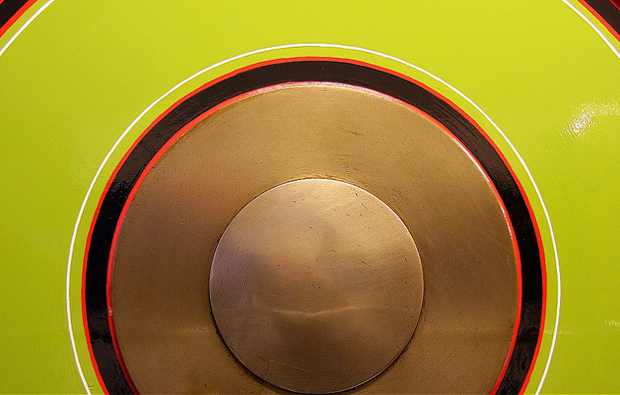
It's a not a new battery or super-hot liquid salt. But while they are not the sexiest of innovative power solutions, there is much to love about flywheels. Yes, flywheels. The energy storage technology--rapidly spinning discs that can discharge
their energy in a matter of minutes--has languished as the materials
needed to use them to efficiently store and transfer energy were not up
to snuff. But the benefits abound. No expensive batteries. Supplies are not mined and controlled by the Chinese government. And if they fail, the fallout amounts to scrap metal.
Now, advances in carbon fiber and magnetic bearings have put flywheel applications back on the table. Or, as it turns out, on wheels.
Automakers are beginning to install flywheel technology--in place of batteries--on new test vehicles. The technology has already done thousands of laps in Formula 1 racing cars by Ferrari, Renault, BMW, and McLaren where it has been used to juice acceleration times, rather than save energy or cut pollution. But the same principles could apply to the family sedan: Volvo will be road-testing a car with the technology this fall.
The flywheels act much like a regenerative braking systems in hybrid-electric cars powered by batteries. Every time the driver brakes, energy is stored by spinning up the flywheel. Energy is returned to the wheels through a variable mechanical transmission or magnets. Newer systems overcome past problems with efficiency and weight by using vacuum-sealed carbon-fiber discs rotating on low-friction bearings or superconducting magnets. If successful, the devices are expected to achieve 60,000 rpm and put out 80 horsepower, while cutting fuel consumption by 20%. Volvo expects the flywheel cars to hit the road by 2013.
Cars aren't the end of the innovation line. Flywheels hold several advantages over electric batteries in general: They last years or even decades, store high amounts of energy, "recharge" (i.e. spin up) in several minutes, and require just a fraction of the space and cost to store the same amount of energy.
In fact, one of the nation's first flywheel power plants came online this June in New York. Beacon Power's 20 MW plant can quickly add or absorb energy from the grid using its 200 flywheels, avoiding construction of new fossil fuel plants and solving some of the problems of storing energy from renewables. Who knows what the application will be when flywheels really get revved up.
[Image: Flickr user loop_oh]
Reach Michael J. Coren via Twitter or email.


 Designer Creates Plastic from Fish Scales
Designer Creates Plastic from Fish Scales
by: TreeHugger Design, 2011-07-28 15:42:00 UTC
 All photos courtesy of Erik de Laurens
All photos courtesy of Erik de Laurens
Designer Erik de Laurens has come up with a novel raw material for making plastic -- fish scales. By dying the scales and treating them under heat and pressure, he can make them act much like a plastic. ...
Read the full story on TreeHugger

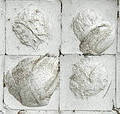

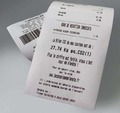
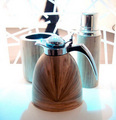

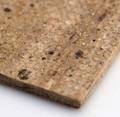
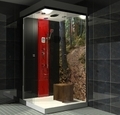
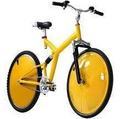
Comments by our Users
Be the first to write a comment for this item.